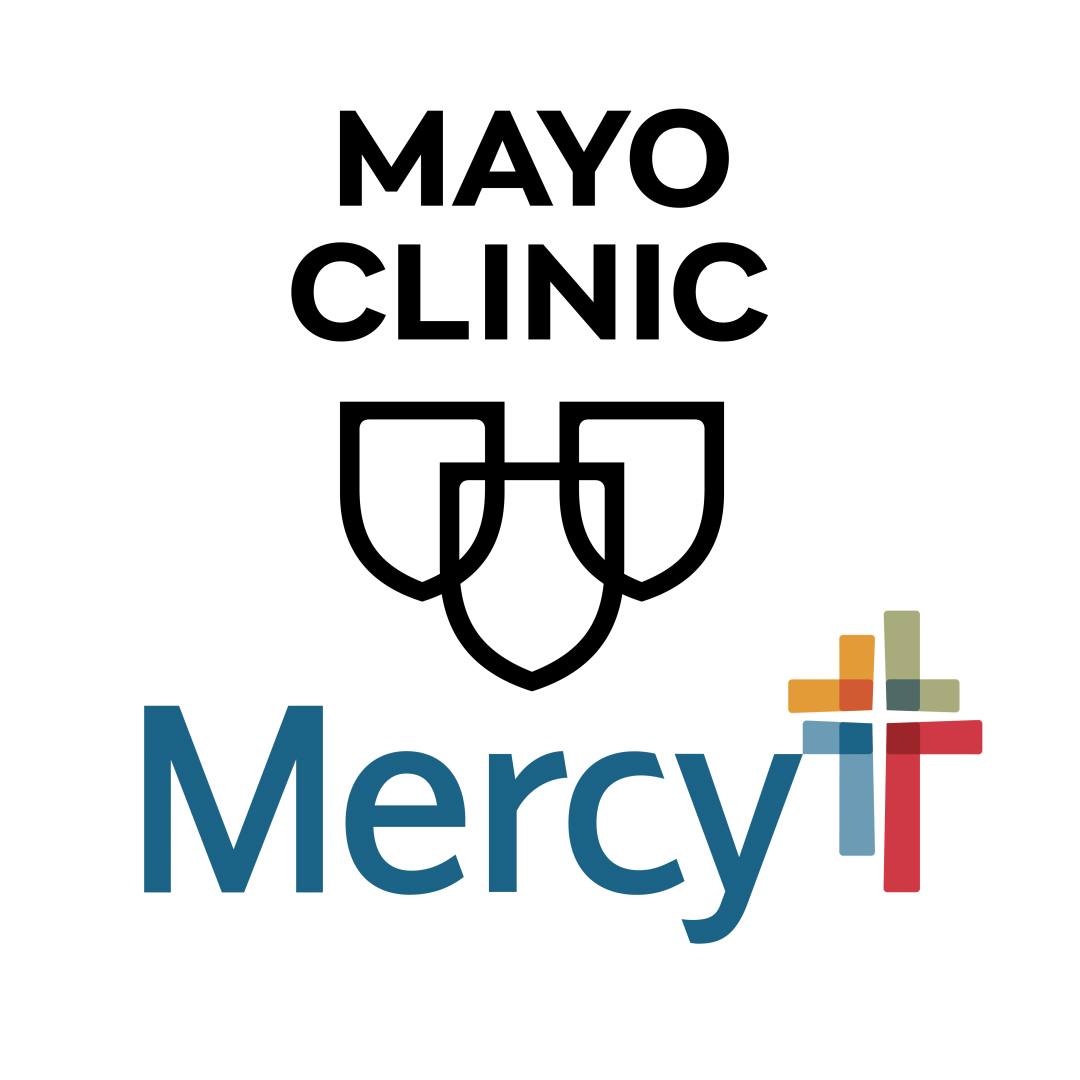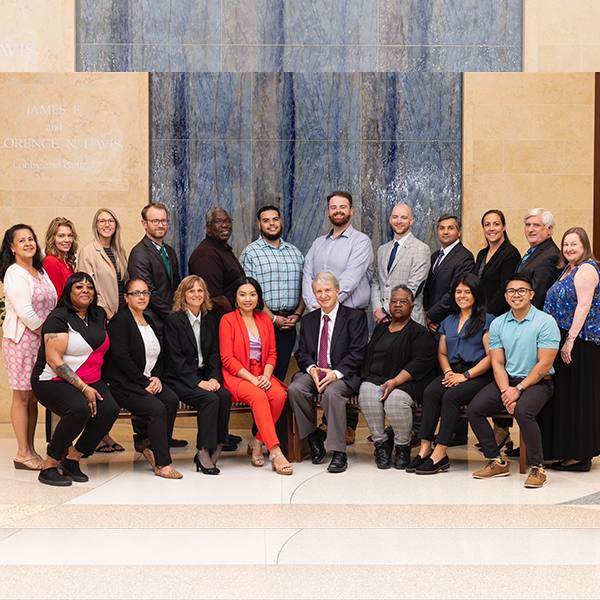-
Research
Paradigm shift in fistula care
From Mayo Clinic Alumni Magazine, 2023 issue 3
It started with a chance encounter in the Gonda Building on Mayo Clinic’s Rochester campus in 2013. Colorectal surgeon Eric Dozois, M.D., chair, Division of Colon and Rectal Surgery, ran into gastroenterologist William Faubion Jr., M.D., Division of Gastroenterology and Hepatology, and shared an idea. A fellow in colorectal surgery from Spain, Maria Herreros Marcos, M.D., Ph.D., had told Dr. Dozois about research she was part of that involved injecting stem cells around perianal fistulas. Drs. Dozois and Faubion wondered if they could incorporate stem cell therapy into their fistula treatment. To learn more, Dr. Dozois spent a week at La Paz University Hospital in Spain, where Dr. Herreros Marcos had returned. That hospital was an early leader in using stem cells to treat patients with perianal Crohn’s disease.
“Dr. Faubion and I had worked together clinically for many years, shared patients and struggled to help those with Crohn’s disease,” says Dr. Dozois. “Dr. Herreros planted the seed of using stem cells to help those patients. The visit to her hospital in Spain furthered the possibility, and I was excited to discuss with my Mayo colleagues what might be possible.”
Those colleagues included Dr. Faubion and Allan Dietz, Ph.D., Division of Transfusion Medicine and former director of Mayo’s IMPACT (Immune, Progenitor, and Cell Therapeutics) Lab. Putting their heads together, the trio built on the promise of stem cell therapy by embedding the cells into a material that would be surgically implanted in the patient.
The earlyA results
The current standard of care for perianal fistulas is medical therapy, with setons for drainage used for recurrent infection. Results of closing fistulas with this approach are poor (20%–30% at one year). Using plugs with patients’ own mesenchymal stem cells could be a game-changer. A phase 1 trial, called STOMP (STem cells On Matrix Plug) and led by Mayo Clinic, showed a 76% healing rate in a cohort of patients who were highly refractory to conventional approaches.
“The data from our phase 1 trial is the best we’ve seen in any intervention for perianal Crohn’s disease from any institution in the last 100 years,” says Dr. Dozois, noting that Mayo Clinic is the only institution in the world that is putting cells on material to implant in the patient for this condition. “We’ve created technology that augments the body’s ability to heal itself. Patients, who have been desperate for help, have been very pleased with their results in the phase 1 trial.”
The process
It started with a piece of fat. When a patient was enrolled in the trial, they provided a sample of fat from their abdomen. The fat was treated with enzymes to release the stem cells, which were kept in a body-temperature incubator in the IMPACT Lab and fed every three days with a soup-like mixture of carbohydrates, sugars and proteins. The stem cells are fast-growing, doubling in quantity every 24 hours. When Mayo Clinic laboratory staff determined by microscopic review that there were enough cells for the plug, the cells were combined with the plug material for several days. The finished therapy was packaged and transported to the surgeon’s location for implantation.
The potential
“This approach could be a real paradigm shift in wound repair for fistulas that won’t heal,” says Dr. Dozois. “If we succeed in healing perianal fistulas, it’s logical that we could heal other indications with difficult-to-heal wounds, including from GI surgeries, diabetic ulcers and traumas that normally require skin grafts. And the profile of this treatment is incredibly safe — patients get their own cells.”
Dr. Dietz, who oversaw the regulatory and manufacturing processes of the treatment, describes the reliability of this process as outstanding and says he expects to see it in clinical practice within a decade, pending results of subsequent trials. About fistulas Approximately 26% of patients who have Crohn’s disease develop perianal fistulas. These occur when an infection in the anal gland progresses into an abscess that can require surgery. Left untreated, these fistulas leak fecal material and can lead to a permanent colostomy and, in some cases, cancer. Perianal fistulas can negatively affect quality of life — recurring infections, antibiotic and narcotic use, drainage, discomfort, odor and social retreat. Even when the fistulas are surgically repaired, they often reoccur. Most of the treatment options have a low success rate.
“Homer’s ‘Iliad,’ one of the oldest pieces of existing Western literature, describes a battle where a soldier is injured, is carried off the field, and his wound is cleaned and stitched together,” says Dr. Dietz. “Although this epic dates back to the 8th century, the way we treat wounds has remained relatively the same. We still stitch together two edges of tissue and let them fix themselves. Our new approach, with a cell-seeded plug, is a paradigm shift in how to treat nonhealing wounds. We take cells from your body and give them back to you to flip the repair switch. The body is capable of fixing itself, and we’re giving it the signal to do so.”
Dr. Dozois says the median duration of the disease prior to treatment in the trial was four years. Those who responded to the trial responded within six months. “We believe this approach will help alleviate this chronic condition in many patients who haven’t had hope, moving them from needing repeated treatment to being healed.
“This is what Mayo Clinic does best — take a significant problem that seemingly has no solution and think about it across disciplines, with colleagues in medicine, surgery and the lab. Individually, we wouldn’t have come up with this solution. Our union of forces led to this landmark work."
###
Dr. Dozois, Dr. Faubion and Mayo Clinic have financial interests in the regenerative fistula plug technology. Any profits Mayo Clinic realizes from its business ventures are reinvested in research and education initiatives at Mayo.










